Even for most Greeks, the Mani is considered a remote and mysterious region, a step into another world. A 75k-long peninsula, with a spine formed by the rugged Taygetus mountain range, it is inhabited by a proud warrior people who claim to be direct descendants of the ancient Spartans. For centuries, the Maniots fended off the Turks, while the rest of Greece was absorbed into the Ottoman Empire. Still today, the Maniot flag bears the words “Victory or Death,” as opposed to “Freedom or Death,” which is used in the rest of the country. Because, throughout the course of history, the Mani has never lost its freedom.
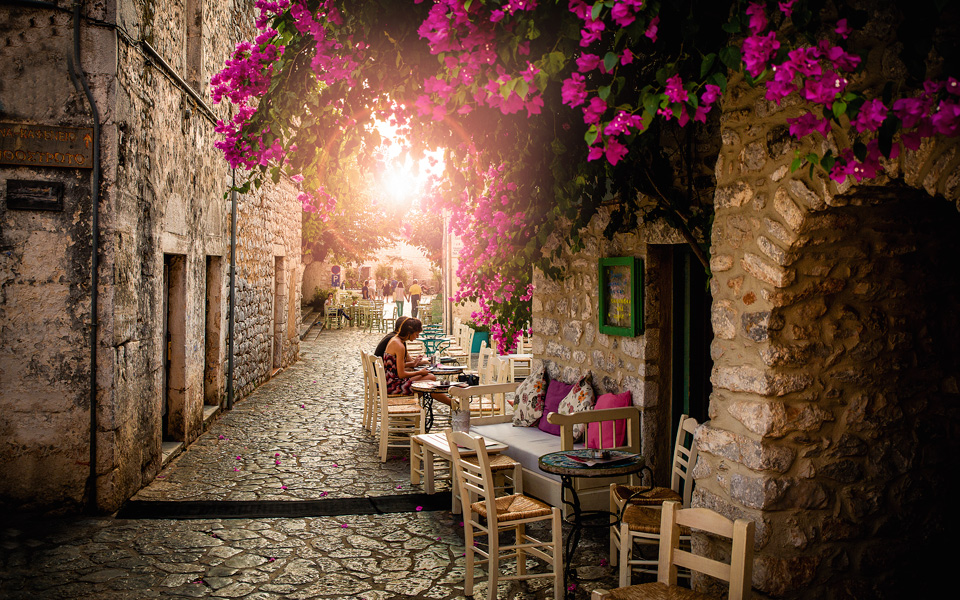
© Yannis Larios
Arriving from Kalamata, the seaside village of Kardamyli appeared surprisingly peaceful with a sleepy square, planted with mulberry trees and rimmed by cafés, where the older menfolk talk politics over coffee. Kardamyli lies in the shadow of the Taygetus mountains, overlooking the Messinian Gulf. We walked up to the uninhabited hillside village of Old Kardamyli, entering through an arched gateway, to explore a cluster of sturdy Maniot tower houses and a church. The Maniots are known throughout Greece for their traditional dwellings, built three or four stories high, with flat roofs and tiny openings for windows. From the 14th until the late-19th century, families here were embroiled in blood feuds and these tower houses, grouped closely together in fortified villages, offered shelter from rival clans waging vendettas. At one time, there were over 50 Maniot villages made up of these extraordinary houses. As the sun began to set, the limestone buildings took on warm orange and purple hues, and we walked back down to the coast for supper.
The next morning, we hiked the lower slopes of the wild Taygetus mountains, following a steep rocky path through woodland and past several magnificent little sandstone Byzantine churches. We returned through the spectacular Viros Gorge, tracing the route of the dry river bed, scattered with huge smooth white boulders, and inhabited by goats and birds of prey. From the bottom of this steep-sided canyon, we looked up and followed a strip of deep azure sky back down towards the sea and civilization.
“ The Maniots are known throughout Greece for their traditional dwellings, built three or four stories high, with flat roofs and tiny openings for windows. From the 14th until the late-19th century, families here were embroiled in blood feuds and these tower houses, grouped closely together in fortified villages, offered shelter from rival clans waging vendettas. ”
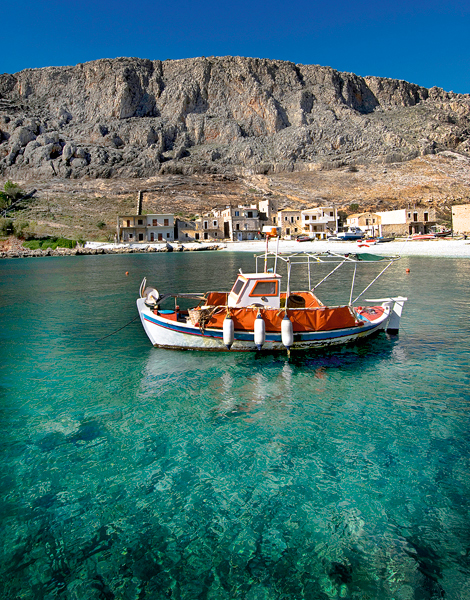
© Clairy Moustafellou
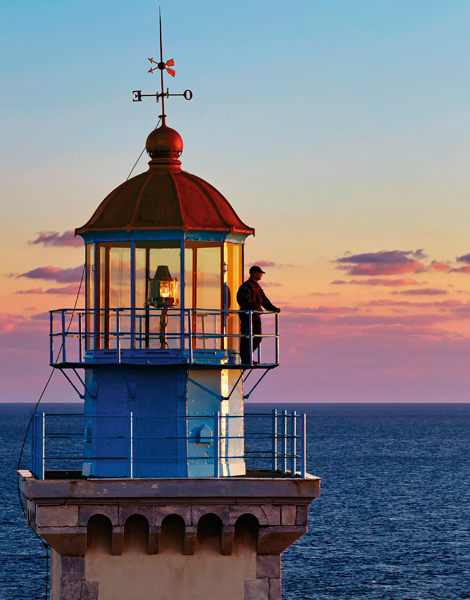
© Perikles Merakos
South of Kardamyli lies the region’s only sizeable beach resort, Stoupa. Due to modest tourism, this former fishing village has expanded over the last few decades and now has a sprawling periphery of modern concrete houses. It’s certainly not as pretty as Kardamyli, but it does have much better beaches. We stopped at the sandy cove of Kalogria, backed by tamarisk trees and overlooked by three seafood tavernas. It was here that Cretan writer Nikos Kazantzakis lived in 1917 and met the character who was to inspire Zorba, the freedom-loving protagonist in his novel, Zorba the Greek. There is a bronze bust of Kazantzakis, mounted on a grey marble plinth, above the beach.
Now it was time to pass from the Outer Mani, with its picturesque cypresses and mulberry trees, lush olive groves and green gorges, to the InnerMani, where the landscape becomes far starker and more arid, and the ruggedslopes support huge rocks, cacti bearing prickly pears, and little else. In fact this, locals claim, is the “real” Mani.
Tellingly, the border town of Areopoli takes its name from Ares, the ancient Greek god of war. We stopped for coffee in a cobbled side street and discussed the fact that the first move to liberate Greece from the Turks began in Areopoli on March 17, 1821. It was from here that the local Maniot chieftain, Petros Mavromichalis, gathered 3,000 men and marched north to Kalamata. They captured the city on March 23, signaling the beginning of the Greek War of Independence.
“ It was here that Cretan writer Nikos Kazantzakis lived in 1917 and met the character who was to inspire Zorba, the freedom-loving protagonist in his novel, Zorba the Greek. ”
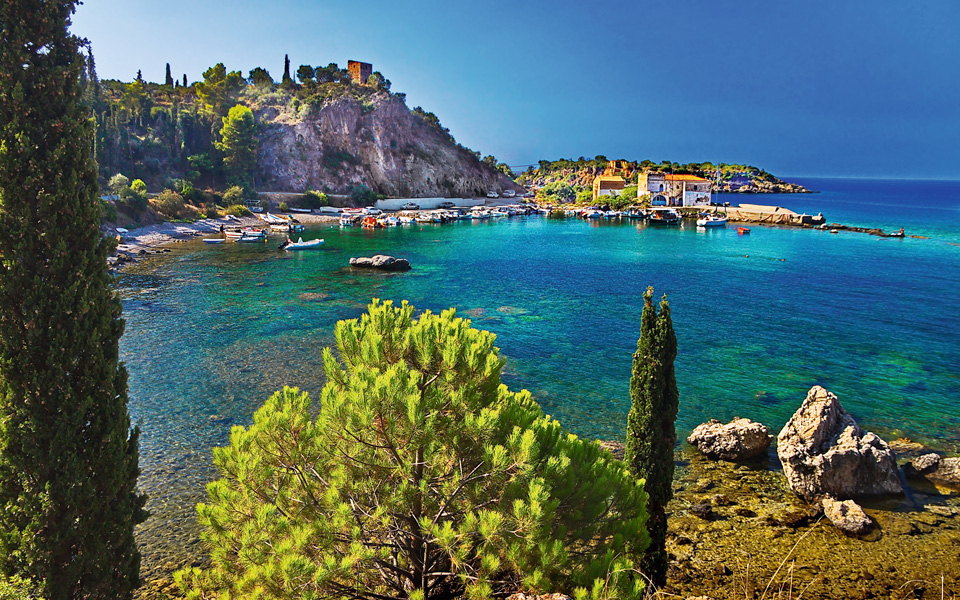
© Mythical Peloponnese
But we were heading south, to Koita, historically one of the oldest and most important tower-house villages. From there, we cycled to the windswept Tigani peninsula and walked across a flat expanse scattered with white rocks to its tip, crowned by a ruined medieval fortress. Founded by William II de Villehardouin in 1248, it was one of three Frankish fortresses defending the southeast Peloponnese, the other two being Mystras and Monemvasia. Inside, we found the foundations of a church, with tombs that had obviously been plundered centuries ago, adding even more eeriness to this proud but desolate stronghold.
Nearby, high above the crashing waves, we followed a narrow path through wild flowers, to visit the tiny whitewashed Church of Panaghia Odigitria, built into the seaward-facing cliffs back in the 13th century. The door was ajar, so we peeked inside and saw peeling frescoes in typical Byzantine hues of russet red, deep blue and warm yellowy ochre. Behind the church, we found a cave, once no doubt inhabited by hermit monks. Here we recalled that the soldierly Maniots were also fearless pirates, whose ships patrolled the waters off their rugged coast, blessed by local priests, who occasionally even accompanied them on their raids.
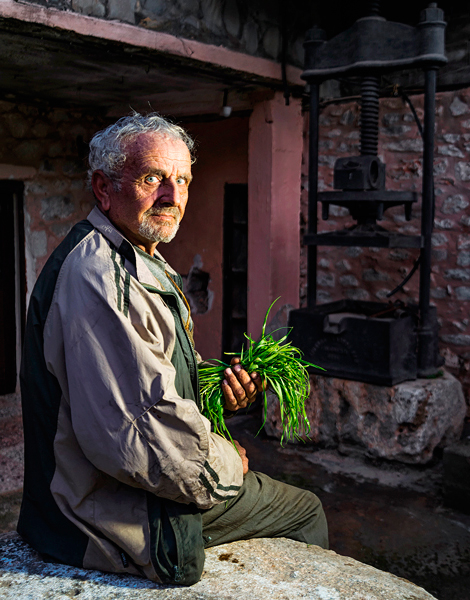
© Perikles Merakos
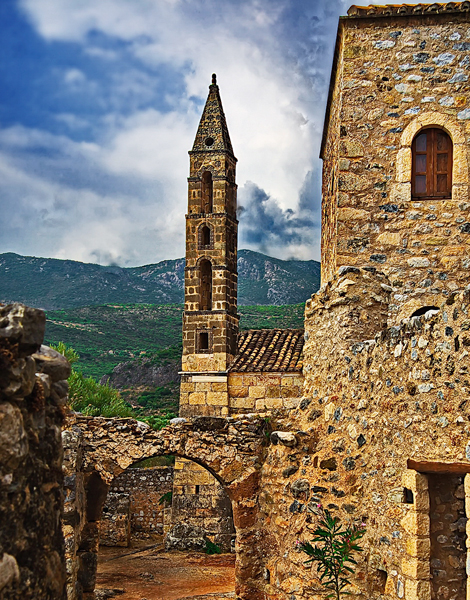
© Mythical Peloponnese
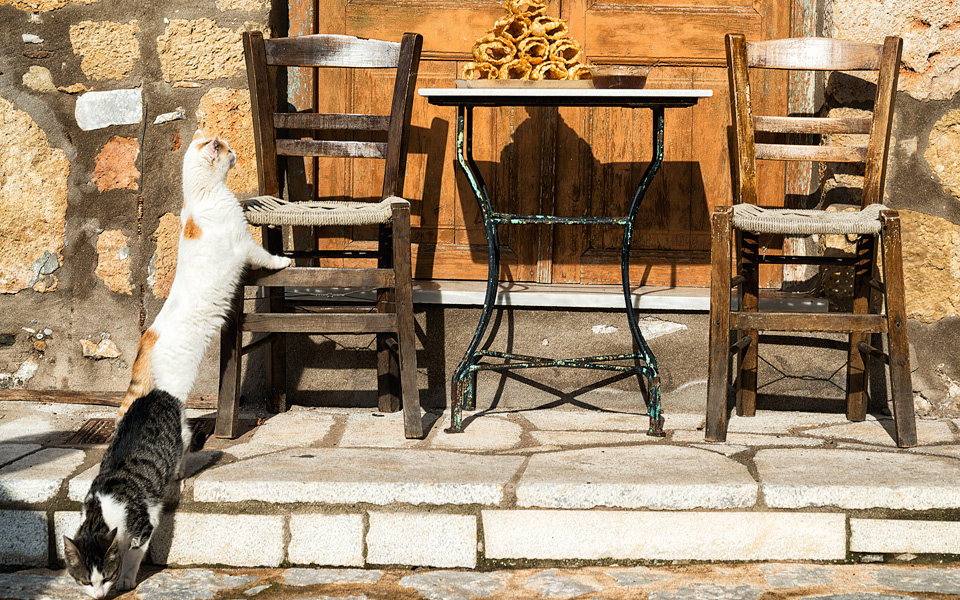
© Perikles Merakos
It was time to proceed to our final destination, Gerolimenas. Founded as a trading port in the late 1800s, and known for exporting quails to Marseilles in France, it lies close to the Mani’s southern tip, and gives onto the open sea. From here we walked to Vathia, another typical Maniot settlement, built on a strategic hilltop 200 meters above the coast. Several of its fortified stone tower houses, dating from the 18th and 19th centuries, have been renovated as part of a Greek National Tourism Organization pilot project to regenerate six traditional villages. But today it remains virtually uninhabited. From here the road takes you even higher and at one point you have amazing views to each side, with Porto Kagio, a deep sheltered turquoise cove where three sleek white sailing boats had dropped anchor, to the east, and the sandy beach of Marmaris, to the west.
And so we had arrived at the southernmost point of mainland Greece, Cape Tainaron, which the ancients believed to be the location of the Cave of Hades, the entrance to the Underworld. Unlike the Cretans, who are known for their exuberant wedding celebrations, the Maniots have a noted fascination with death and give greater emphasis to funeral rituals. These culminate with moiroloi, or mourning songs – epic laments, sung exclusively by women during wakes and at the graveside. They take the form of a long, terrible, suffering dirge, the sound of which is carried away by the wind, out across the open sea, far away from this proud wild land, and to eternity.












